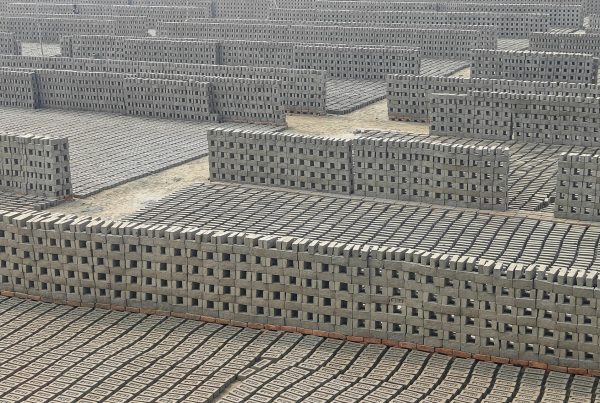The green revolution has taken the world by storm as governments and private companies divert their business practices to account for climate change and sustainability.
For some, the high cost of the deep green transformation seems a little too steep — yet one mustn’t overlook the tremendous financial, social and environmental return on investment (ROI) that follows long term.
Few would argue that green financing is critical if progress should continue. Fortunately, funding for sustainable infrastructure is available.
The High Cost of Building Green
Whilst transitioning toward greener infrastructure may be a pricey undertaking short-term, it is worthwhile – the long-term life cycle and energy-efficiency savings help offset the upfront costs immediately.
Compared to conventional construction, green building costs depend on several factors, including:
- Environmental certifications — Leadership in Energy and Environmental Design (LEED), Green Mark or Building Research Establishment Environmental Assessment Methodology (BREEAM).
- Whether the project aims for net-zero performance.
- The types of green materials used.
- Actual design and construction.
The design and construction costs alone might be 2%-12% higher than traditional buildings, but investors have more opportunities to save during and post-development.
Of course, some of the more expensive materials and finishes for deep green infrastructure are unavoidable. For instance, LEED windows cost $19,872, while conventional windows are $3,150. Likewise, a solar roof might run around $77,795 compared to a traditional roof at $12,157 — the difference is the solar roof accrues $1,000 in annual energy savings.
Retrofitting buildings and building green from the ground up is necessary to reduce urban emissions and keep future costs down, especially since the demand is so high for commercial buildings. Luckily, sustainable structures are becoming more popular because many people are starting to see how the higher initial costs relate to savings as time goes on.
Utilizing sustainable materials and advanced technologies to renew city infrastructure can ensure buildings meet even higher standards for durability and energy efficiency.
4 Ways to Finance Deep Green Infrastructure
Overcoming costs is often the most challenging factor regarding sustainable buildings. Fortunately, several investment solutions and opportunities help subsidize the built environment’s deep green transformation.
1. Green Banks
Green banks deliver low-cost capital for renewable energy projects — including solar — at a favorable rate. Low-cost financing packages might include reduced interest rates, low- or no-money-down financing, and extended terms to help investors garner higher returns on investment.
Green banks typically take the place of other financial institutions in attracting and borrowing private capital in challenging markets. While green banks don’t exist at the federal level, many states have established green banks, such as the Connecticut Green Bank, NY Green Bank, Rhode Island Infrastructure Bank and Hawaii Green Energy Market Securitization.
According to the Coalition for Green Capital’s annual Green Bank Industry Report, green banks invested $7 billion in clean energy using $1.9 billion worth of green bank funds in 2020.
The Connecticut Green Bank’s investments are particularly noteworthy, mobilizing $1.94 billion in the state’s green economy since its establishment in 2011.
2. Tax Increment Financing
Tax increment financing (TIF) enables upfront government investments in public infrastructure and revitalization.
TIF is possible when new and large-scale developments have substantial value in boosting nearby real estate markets, resulting in incremental tax increases. Local municipalities can then pay back their investments later. Often, TIF revenues are applied to land acquisitions, park and road development, environmental remediation and sewer or water management upgrades.
An example of TIF in action is Dallas, Texas’s Deep Ellum TIF District, which comprises 157 acres of mixed commercial, residential and industrial areas. When Dallas first established its TIF ordinance in 2005, the total appraised value of taxable property in the district was $108 million.
The project included 18 new structures amounting to $400 million in additional taxable private investment with improvements to transit and the environment. Expenditures over $27 million are currently financed through tax revenues on an incremental basis, expected to end by 2027 or sooner if enough income is available to subsidize the project.
Local governments can utilize TIF in self-financing large-scale sustainable projects. However, states must first pass legislation allowing local governments to use TIF, often requiring a thriving real estate market and economy wherever the project occurs.
3. Green Bonds
For a deep green transformation to occur, individual cities must invest in green projects and infrastructure updates.
The U.S. Environmental Protection Agency (EPA) plans to issue $11 billion to states to improve water infrastructure over the next five years, encouraging local governments to use the funds for climate-resilient projects in disadvantaged communities.
Congress allocates only 10% of EPA funding for sustainable infrastructure, but cities can garner additional funds for deep green development through green bonds. These debt securities financially support infrastructure projects that benefit the environment. Investors might be more attracted to green bonds since they strictly focus on eco-friendly activities.
Throughout the years, the issuance of green bonds has increased significantly. In 2021, over $95 billion in green bonds were purchased — more than double the amount in 2020.
4. Public-Private Partnerships (PPP)
Government agencies and private-sector entities might enter contractual public-private partnerships (PPP) to finance deep green construction projects. For example, transportation or public park projects might comprise design, financing, construction, operations, and revenue participation.
Typically, PPP projects obtain financing from several sources, including equity and debt contributions, bank guarantees, bonds or intercreditor agreements. Intercreditor agreements are essential in addressing potential financing issues, including coordinating loan maturity, holdings, decision-making and payment management.
PPP contracts usually last 20 to 30 years or more. While private companies are held responsible for financing, the public agency must deliver payments over the project’s lifetime.
Sustainable Finance Delivers Greener Solutions
Investing in a deep green transformation is more important than ever as cities must improve their climate resilience and crumbling infrastructure. The future of sustainable cities looks bright, especially with new financial solutions on the horizon for green projects. Companies can feel more secure in delivering eco-friendly alternatives by tapping into financing options to offset construction costs.











